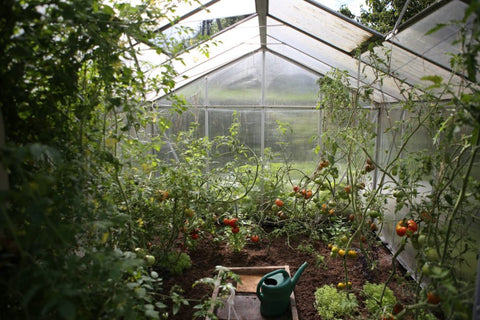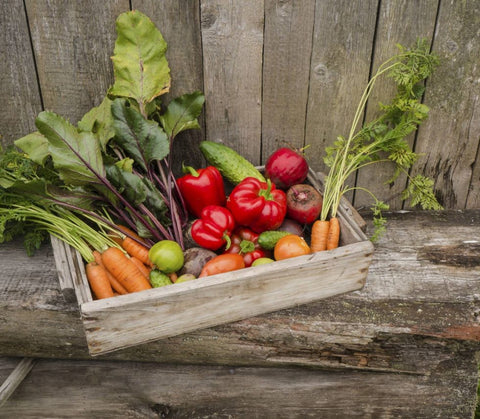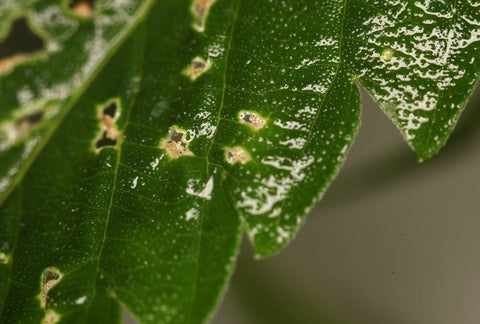Garden Weather: Planting In Any and All Conditions
For some, gardening might feel like a task too daunting to even entertain – especially if you live in a climate with harsh winters or extreme summers. Maybe you have embarked on your gardening journey and you are still wondering why your garden isn’t thriving. While we’ve talked before about planting for seasons by zones, there are some basic things to note about how to create a thriving garden in any and all kinds of weather conditions, as well as options for indoor and kitchen gardens (which we are obviously extremely passionate about). While we are experts in bottle gardens, and growing your own food in window sills, we wanted to get the scoop from someone who’s garden is the epitome of “thriving” despite her frigid winter northeast location of Maine. Kirsten Lie-Nielsen is a writer and farmer who lives in Maine with her husband and busy farm of expanding gardens and working livestock. She is the author of two books, The Modern Homesteader’s Guide to Keeping Geese and So You Want to Be a Modern Homesteader? and devotes her online space to educating people on taking the leap towards a homesteading lifestyle. Take it from someone who has been there, creating a thriving garden is possible no matter where you are, as long as you take some time to learn and grow your skills, along with your garden.
Creating a Thriving Vegetable and Herb Garden in A Cold Climate

The Problems
A resident Mainer, Kirsten mentions how it is easy to think of gardening as a one season activity. In Maine, they don’t put their gardens in until around Memorial Day, and “almost everything is out of the ground by the end of September,” Kirsten says. The winters are long and cold with plenty of snow and short daylight hours. As you might expect, frost and snow is a huge problem for cold weather climates. Because of this, knowing the best time to plant in the spring and harvest in the fall can mean the difference between garden success and failure.
The Solutions
We always say, there are no gardening failures, only gardening experiments. Kirsten echoes this notion that cold climate doesn’t have to mean failure! While gardening failutres do sometimes occur, she says, and you should always expect at least a few growing pains no matter where you are growing, don’t be discouraged. Rather, learn from your mistakes. “With a little bit of extra attention a cold winter does not have to mean no gardening. The key to success is to make sure to tailor your methods to each plant’s ideal growing conditions. For example, some plants prefer regular light watering and some like only an occasional soak; or some plants need full light while others thrive in partial light or shade.” Find the plants that work the best in your garden and tend to those. Gardening conditions do vary depending on what you’re trying to grow, but sunlight and regular soaking rains are important. You can replicate these indoors with a grow light and regular watering — but be sure to check the specific needs of what you are growing.

What About Indoor Gardening?
Glad you asked! Indoor gardening is an excellent solution for those who don’t feel they have the space, time, or climate conditions to tend to an outdoor garden. We have several tips both on our blog as well as our Instagram feed to help you start your indoor gardening journey. Remember, it doesn’t just have to be herbs (though that is a perfect start). You can also grow vegetables and fruits indoors if you have some sunny window sills! Kirsten, a seasoned homesteader, also has had positive experiences with indoor gardening and shared some of the benefits with us.
“In 2018, we rebuilt our house, adding some basics like running water and electricity. One of my dreams for our home was to have the space, warmth, and light for year-round growing, and we now have a lovely room with big picture windows and a wood stove. I started adding a few hardy house plants like rosemary (a house plant in Maine, though it grows outdoors in some parts of the country). It has quickly expanded to a few more exotic flowers, plenty of garden herbs, and a few medicinal plants.”
When starting out as a beginner, it’s always a good idea to begin with hardy plants, like rosemary as Kirsten mentioned. Hardy plants are typically easy to care for with little effort and will give you a confidence boost. Another tip? Plant what you will actually eat. This will get you excited to measure your plant’s progress and give you something to look forward to as your plant is growing. Kirsten mentions that she likes to plant a few fun and unusual vegetables each year, but mainly focuses on growing her favorite staples, that she uses in the kitchen regularly. “When it comes to herbs for the kitchen counter, these are things like oregano and basil. I also grow ginger indoors, my favorite spice.”
Tips For Gardening With Limited Space
Here is the good news, if you haven’t already caught on: Bigger is not always better in the garden. Gardens can thrive anywhere with the right conditions! Kirsten shared some excellent advice when it comes to starting your garden in a small space:
You can grow your own food in almost any conditions, as long as you are planting what will do well in those conditions — and there is a plant for almost every situation! – Kirsten Lie-Nielsen

“You can supplement light with a grow light, and space can be tiny but still effective.” Kirsten is using a grow light in her kitchen right now, and has had a positive experience so far. Grow lights are a great option because not only can they extend your ‘daylight’ hours during the dark winter months (like they have in Maine), but they also encourage plants to grow straight up, rather than lean towards your window and require regular rotating. Kirsten also mentions that shelves with lights can quadruple your space by allowing you to garden vertically. “Or, just plan to start small! Plant just a few favorites, it will still be a great experience for you. Regardless of how much space you have, do make sure to check how big your plants will be when fully mature. It’s difficult to realize when it’s too late that you’ve planted something way too big for it’s area.”
As Kirsten also points out, plenty of people turn small plots into thriving gardens, and with a little bit of research you can find plants that love growing right next to each other or work on a succession planting plan. “You can grow your own food in almost any conditions, as long as you are planting what will do well in those conditions — and there is a plant for almost every situation!”
Tips for Raising Plants In Low Light

Maybe you have plenty of space, but very little light. You will know if your plants are not getting enough light because they will generally be smaller and slower growing. They will also appear a less vibrant green. “For those with little light options, Kirsten suggested looking into plants that thrive in partial or full shade. There are still plenty of beautiful options out there, as well as edible medicinal plants such as dill, mint, and parsley that will do well in low light conditions.” Another option is to use a grow light, as we mentioned above.
The Bottom Line?
Have fun. “Enjoyment is the key to success in the garden,” Kirsten says (from experience!). “The more excited you are by growing plants, the more attention you’ll give them and the more they will thrive. So, find what really jives you about gardening! For me, it is the garden-to-table experience, I focus on growing ingredients that we love to eat as a family. For you, it might be more exotic plants or herbs for tea or anything else, but tune in to that and grow what you love.”












There are no comments for this article. Be the first one to leave a message!